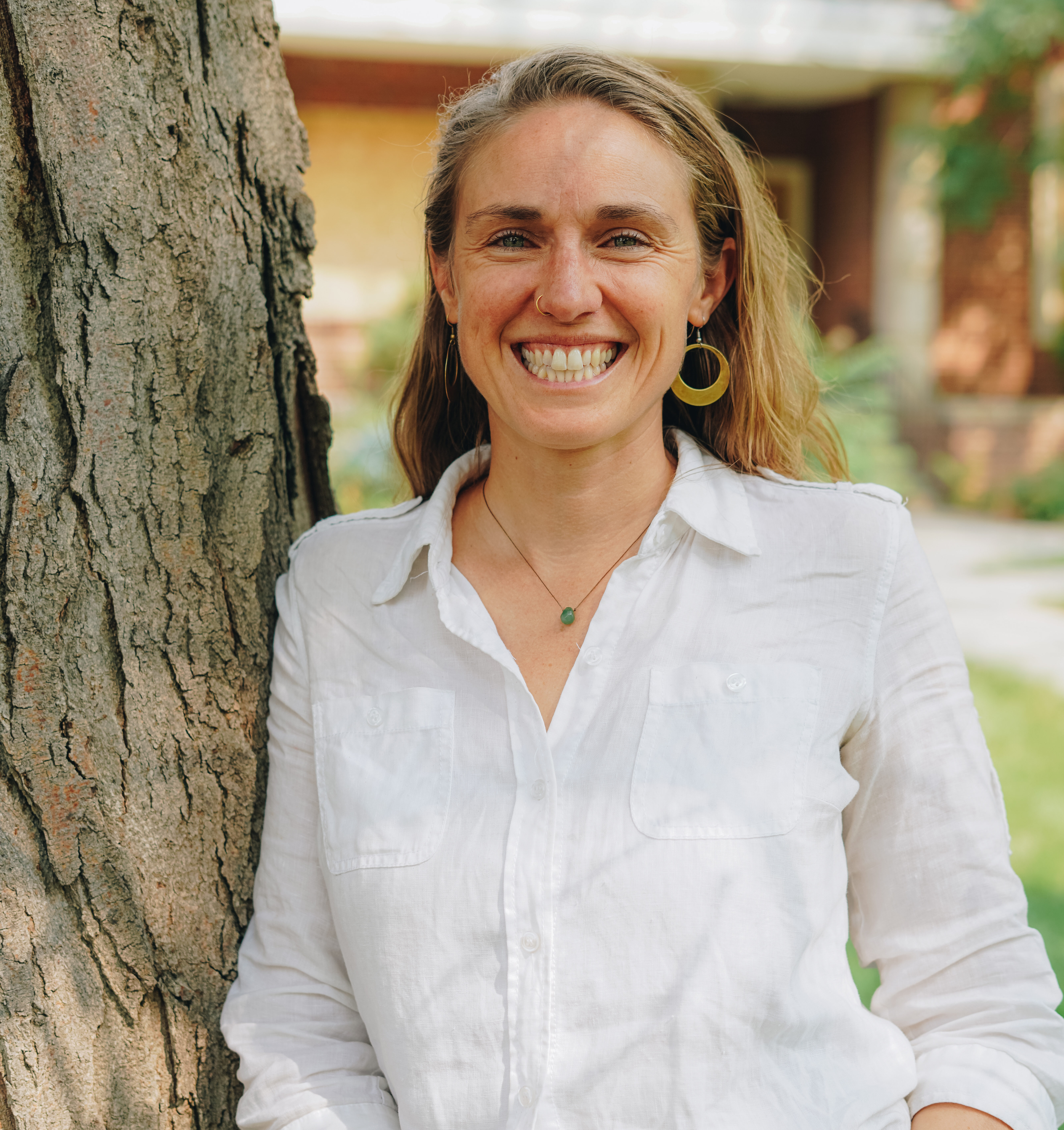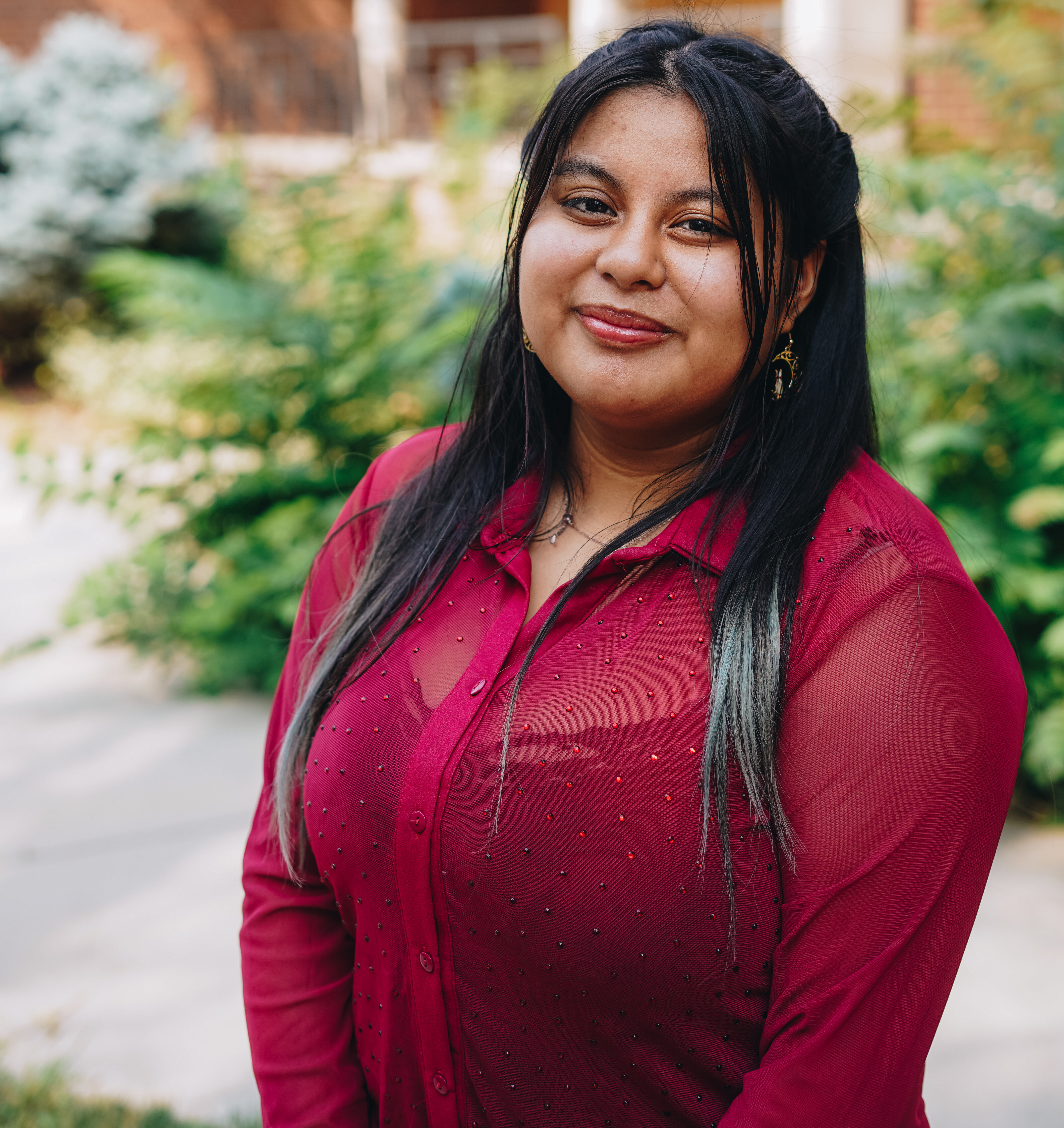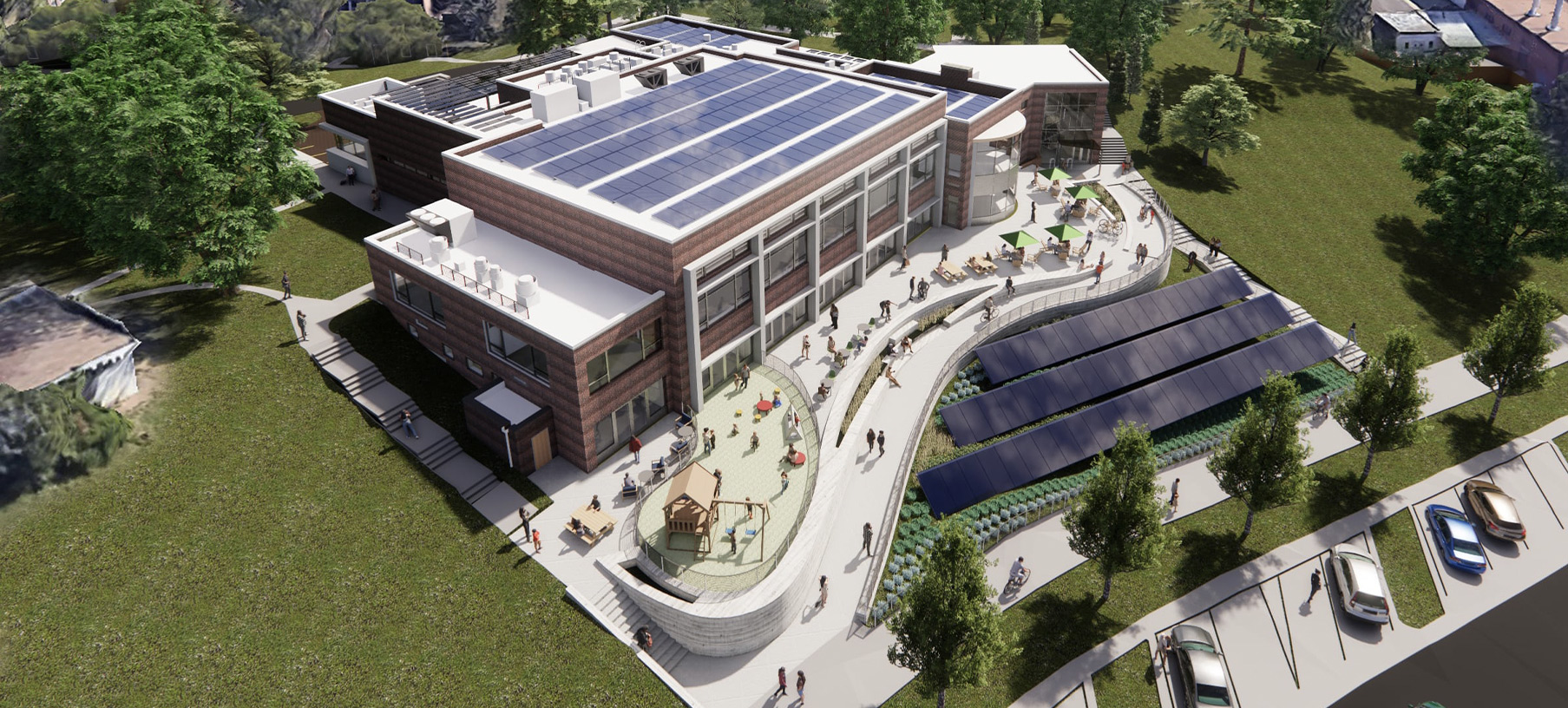Pictured above (left to right): Margaret Brugger, co-founder of Commún; Aleshay, Commún community member; and Andrea Savage, co-founder of Commún.
In 2018, when Westside Investment Partners bought the Loretto Heights campus, local community members knew their neighborhood was going to change.
For many locals living on the east side of Loretto Heights, this project brought fear and resistance. The likelihood of increasing costs and displacement were justified concerns. But for some, this project brought an opportunity.

“In 2018, we got together with other community leaders, there were nine of us in our living room, and we thought about what we need to do to make our community strong in the face of this change,” recalls Andrea Savage, co-founder, community organizer and director of finance & operations of Commún. “How do we reduce displacement and influence development to happen in our community in a way that works for people who currently live here?”
Before taking action, they embarked on an extensive outreach effort, conducting one-on-one conversations, holding community meetings, and collecting surveys. The goal was to listen and grow their ability to lead together as a community.
Those early discussions sparked the formation of Commún. Commún is a nonprofit that helps build community resilience with programs focusing on food sovereignty, mental health, economic vitality, and community organizing. All of the programs at Commún are identified, designed, developed, and led by community members most impacted by the issue they are working to solve.
“We’ve done about 2000 individual sit-down, one-on-one conversations in Spanish, English, and Arabic, really asking the community what we need to be resilient, what are our strengths, and what can we do?” says Margaret Brugger, the executive director and co-founder at Commún.
During these outreach efforts, Aleshay, a quiet and introspective youth, first became involved with Commún. Her mom, aware of Aleshay’s feelings of disconnection at school and in the neighborhood, encouraged her to participate, hoping it would help her find a sense of belonging.

“I was a really shy person,” comments Aleshay. “I would never go knocking on doors, talking to people face to face. But now that I have been attending a lot of meetings and events at Commún, I’ve been really opening myself more.”
Through her involvement with Commún, Aleshay gained a deeper understanding of her community’s challenges and actively contributes to designing the programs and solutions to address those challenges. Aleshay and the team at Commún continually heard from fellow residents through their surveys and conversations about the need for a gathering space. The Loretto Heights Community Center emerged as one of the most significant efforts to address these issues.
The community center became about resilience and staying strong as the neighborhood would soon evolve. “Gentrification is a concern, and so is climate change,” Savage notes. “We’re right along the front range, so we have really high ozone, low tree canopy, and low financial resources in the community.”
The community center, which is planned to open in 2026, aims to mitigate the impacts of these changes by providing a space where residents can come together, access vital services, and engage in initiatives that address both social and environmental challenges.
The 40,000-square-foot facility will host a variety of programs, including mental health services, youth organizing, and environmental education, all shaped by the voices and needs of the local community. Sustainability is central to the center’s design, with features such as a community agrivoltaics garden, renewable energy systems, a wildfire air filtration system, and workshops on sustainable living practices.

Additionally, the center will serve as a resiliency hub, providing shelter and resources to residents during extreme weather events, ensuring that the community is prepared to face the growing challenges of climate change.
“The most unique thing about this project is how it’s actually led by residents,” Savage explains. “Literally, nine of us got together, and no one in that room had a background in development, but we pulled together a really strong team.” This grassroots approach extended to every aspect of the project, from its inception to its design.
“The architects come to our giant community meetings, and they take notes about what residents are saying. Then they go back, and they edit the designs based on what people have said as experts in their own experience,” Savage adds.
This community-led project also will serve as a model for how communities can thrive amidst change. “We are at the cutting edge of what neighborhoods can do around gentrification. This is a pilot for what other neighborhoods could do in many, many ways,” says Brugger.
For Aleshay, Commún became a place where she started to find her place within the community. The sense of belonging and purpose she found at Commún transformed her into an active participant in her community’s future. Aleshay’s journey, much like the journey of the community itself, is a testament to the power of coming together, listening, and taking action.
With the support of The Denver Foundation and its donors, Commún can continue to address the challenges of changing communities and changing climate, while strengthening its community.
The Denver Foundation has been supporting Commún through funds such as the Technical Assistance Fund, Strengthening Neighborhoods, the Community Grants Program — which is the foundation’s signature funding strategy supported by our permanent endowment — in addition to several independent fundholders.
Pictures courtesy: Armando Geneyro
